-
Posts
3,491 -
Joined
-
Last visited
-
Days Won
25
Content Type
Profiles
Forums
Blogs
Gallery
Events
Store
Posts posted by bigjarofwasps
-
-
Maria Theresa Silver Thaler
The silver taler was the currency of the Empire and of the Austrian hereditary lands. The silver taler was very important for trade with the Levant (parts of Turkey, Lebanon, Syria) and the Maria Theresa Taler became the best known and most popular silver coin in the Arabian world. After the death of the Empress, Joseph II permitted the mint at G?nzburg (today in Bavaria, but at that time Austrian territory) to continue striking with the 1780 dies in order to meet the demand from the Middle East. The 1780 taler was the only silver coin that the Arabs trusted and would accept. Thus began the long minting history of the "Levantine Taler" of the Empress Maria Theresa. Since then the G?nzburg taler has been restruck for trade purposes at Vienna, as well as at mints in Prague, Milan and Venice from time to time. The taler became the unofficial currency of some of the lands in North Africa, and it can still be found today in many Arabian bazaars. This version of the taler became so important that it was restruck even in London, Bombay, Paris and Rome. The "Levantine Taler" lost its status as legal tender in Austria in 1858, but thanks to an imperial edict of 1857 as well as the present laws of the Austrian Republic, the mint at Vienna still produces this famous trade-taler down to the present day.
The thaler is 39.5 mm in diameter and 2.5mm thick, weighs 28.0668 grams and contains 23.3890 grams (0.752 troy ounces) of fine silver. It has a millesimal fineness of .833
MARIA THERESA SILVER THALER 1780 RESTRIKE UNCIRCULATED CONDITION
Details
The thaler
is 39.5 mm in diameter and 2.5mm thick, weighs 28.0668 grams and contains 23.3890 grams (0.752 troy ounces) of fine silver. It has a millesimal fineness of .833
Maria Theresa thaler
Maria Theresa thaler. Mint of Rome.The Maria Theresa thaler (MTT) is a silver bullion coin that has been used in world trade continuously since it was first minted as a thaler in 1741. It was named after Empress Maria Theresa, who ruled Austria, Hungary, and Bohemia from 1740 to 1780.
Since 1780, the coin has always been dated 1780 and has been struck by the following mints: Birmingham, Bombay, Brussels, London, Paris, Rome and Utrecht, in addition to the Habsburg mints in Hall, G?nzburg, Kremnica, Karlsburg, Milan, Prague and Vienna. Between 1751 and 2000, some 389 million were minted. These different mints distinguished their printings by slight alterations to the saltire, or "flower" symbol, which looks like an "X" at the top left of the reverse side of the coin. Since 1946, when the Vienna Mint rescinded the rights of foreign governments to issue such copies, over 49 million have been produced.
It was one of the first coins used in the United States and probably contributed (along with the Spanish eight-bit dollar and the Straits dollar) to the choice of a dollar as the main unit of currency for the United States.
In German-speaking countries, following a spelling reform dated 1901 which took effect two years later, "Thaler" is written "Taler" (although the spelling of "Theresia" was not affected). Hence 20th-century references to this coin in German and Austrian sources are found under "Maria-Theresien-Taler". The spelling in English-speaking countries was not affected.
The inscription on the obverse of this coin is in Latin: "M. THERESIA D. G. R. IMP. HU. BO. REG." The Reverse reads "ARCHID. AVST. DUX BURG. CO. TYR. 1780 X". It is an abbreviation of "Maria Theresia, Dei Gratia Romanorum Imperatrix, Hungariae Bohemiaeque Regina, Archidux Austriae, Dux Burgundiae, Comes Tyrolis. 1780 X", which means, "Maria Theresa, by the grace of God, Empress of the Romans, Queen of Hungary and Bohemia, Archduchess of Austria, Duchess of Burgundy, Countess of Tyrol, died 1780". The "X" is actually a saltire, and indicates that the coin was minted after 1753. Around the rim of the coin is the motto of her reign: "Iustitia et Clementia", meaning "Justice and Clemency".
In Ethiopia
From the reign of Emperor Iyasu II of Ethiopia, the MTT is first recorded as circulated in Ethiopia.[1] According to traveller James Bruce the coin, not debased as other currencies, dominated the areas he visited in 1768. Joseph Kalmer and Ludwig Hyun in the book Abessinien[2] estimate that over 20% of 245 million coins minted until 1931 ended up in Abyssinia. In 1890 the Italians invented the Tallero Eritreo, styled after the M.T.T., and introduced it in their new colony Eritrea, also hoping to impose it on the commerce with Ethiopia. They remained, however, largely unsuccessful. At the early 1900s Menelik II unsuccessfully attempted to mint the new Menilek thalers, with his effigy, but styled following the model of the M.T.T., locally and force their use. The newly established Bank of Abyssinia also issued banknotes denominated in thalers. Starting in 1935 Italians minted the thaler on their own.
The Maria Theresa thaler was also formerly the currency of Muscat and Oman. The coin remains popular in North Africa and the Middle East to this day in its original form: silver coin with a portrait of the buxom Empress on the front and the Habsburg Double Eagle on the back. It is said that the low-cut gown she wears has added to the popularity of the coin.



 0
0 -
1961 URUGUAY SILVER $10 PESOS
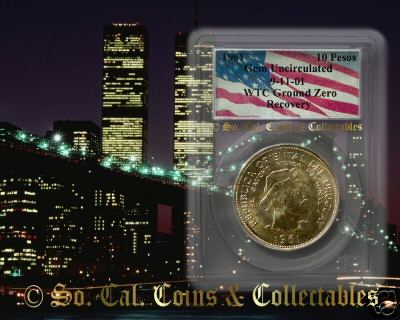
 0
0 -
Allowing the yen to circulate freely in occuipied territories would have been a dangerous economic strategy since it would have reduced the Bank of Japan's ability to protect the currency. The Japanese economy at the time was not large or strong enough to absorb external shocks on its currency, hence they created this occupation currency which was completely worthless in reality.
There are also notes for Australia, which were obviously never issued but they were printed and can be found without much difficulty.
Makes perfect sense, I suppose.
I read an interesting book a while ago, about how the Japanesse plundered SE Asia, in much the same way as Germany did Europe.
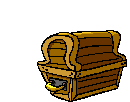
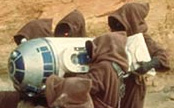

 0
0 -
Isle of Man 1-oz Silver Crown
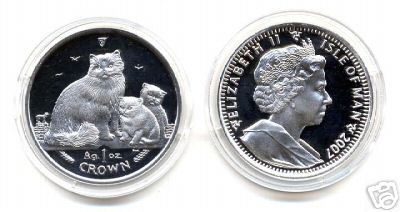
 0
0 -
Heres an interesting one, as regards to the fact that it doesn`t state on it 1 oz .999 silver.
NEW ZEALAND KIWI 1 OZ SILVER
Specifications
Metal : Silver
Denomination : $1 Dollar
Weight : 1 Troy Oz
Diameter : 40mm
Edge : Milled
Country of Issue : New Zealand
Year of Issue : 2007
http://www.newzealandmint.com/dsales/dshop...1348&cat=1#
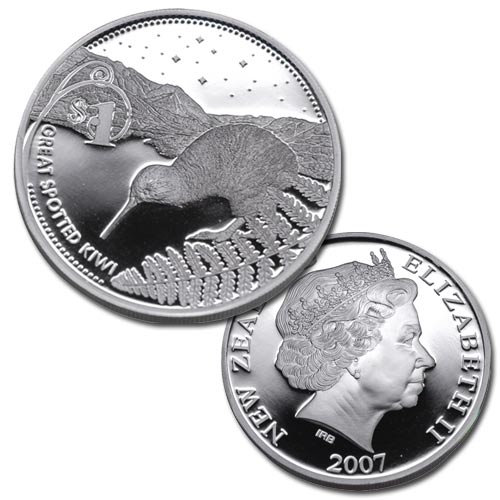
 0
0 -
Guys, you maybe surprised to know that, of all the Lynch Dollars, currently for sale on Ebay as buy now for $99, none have been sold, and of the numerous ones up for bid, the highest price offered has been $33, with the reserve not being met.

 0
0 -
Australian Silver Kangaroos
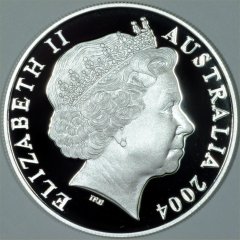


 0
0 -
One Ounce Zambian Silver Elephants
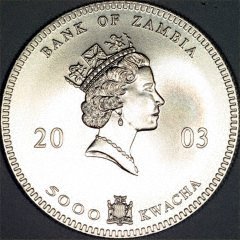


 0
0 -
One Ounce Somalian Silver Monkeys
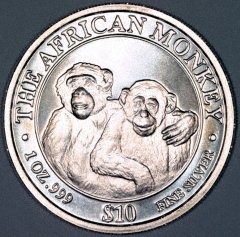


 0
0 -
Any idea why they bothered at all, and didn`t just say right heres the Yen take it or leave it, your national currency is now worthless?
0 -
What an interesting topic. Curious how they printed them in English?
0 -
Australian Silver 1oz Lunar, 1 Dollar - Legal Tender
Issued as legal tender under the Australian Currency Act 1965, the coin features the Ian Rank-Broadley effigy of Her Majesty Queen Elizabeth II and the 2007 year-date on the obverse.
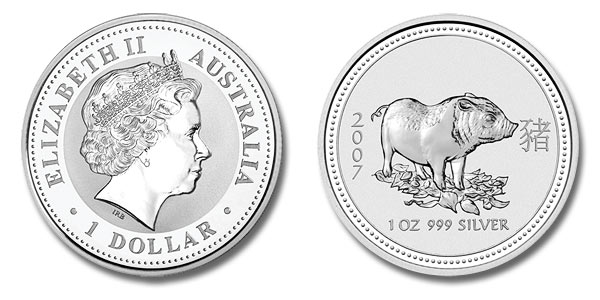
 0
0 -
Corporal Steve Edwards of the 2nd Royal Tank Regiment was killed in a roadside bomb attack on a Warrior armoured vehicle in Basra on 31 July.
Cpl Edwards was 35 and had served in Northern Ireland, the Balkans and Iraq. He leaves behind a wife and an 18-month-old son.
His commanding officer Lieutenant Colonel David Catmur said: "I have known Eddy for several years and have many fond memories of him, particularly our two years together in 2002 and 2003 when he commanded my squadron's ambulance.
"His years of experience and kindhearted nature will be a great loss to us all."
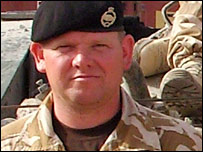
 0
0 -
2007 Australian Koala 1oz silver Specimen Coin
Issued as legal tender ( first year of issue) under the Australian Currency Act 1965, the 2007-dated coin bears the Ian Rank-Broadley effigy of Her Majesty Queen Elizabeth II on its obverse.
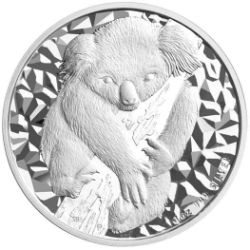


 0
0 -
British soldier killed in Basra
A Warrior armoured vehicle came under attack in Basra
A soldier from the UK's 2nd Royal Tank Regiment has been killed in Basra, southern Iraq.
The soldier, whose family have been informed, died after being injured by an improvised explosive device, the Ministry of Defence said.
He had been with a Warrior vehicle patrol carrying out routine duties in the Mustashfa district of Basra City on Tuesday night.
His death takes to 164 the number of UK soldiers killed in operations in Iraq.
Of those killed since the 2003 invasion, 128 have died in combat.
0 -
American Silver Eagle Dollar

 0
0 -
Guys, feel free to add any more, all I ask is that there of 1 oz in solid silver , and legal tender, in that country....
Gordon.
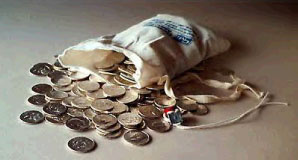
 0
0 -
1oz Silver Maple, minted by the Royal Canadian Mint.
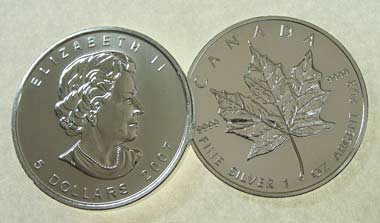
 0
0 -
1oz Silver LIBERTAD, minted by the United Mexican States Mint.
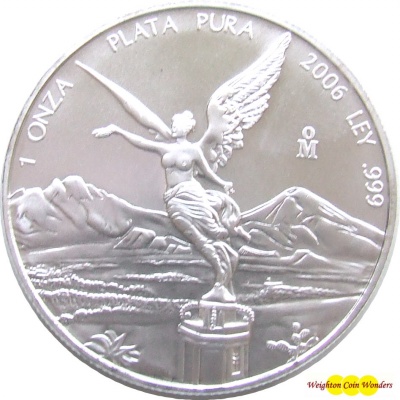
 0
0 -
THE PANDA SILVER COIN FROM CHINA

 0
0 -
British Silver Britannia
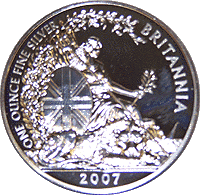
 0
0 -
Silver 1oz KOOKABURRA
The Australian 1oz SILVER KOOKABURRA coin is issued by the Perth Mint in Western Australia

 0
0 -
Hi Guys,
Given the fact that silver seems to be on the up & up, it might be time to start investing in silver bullion. I`ve just about corner the market in Silver Eagles, so thought I`d branch out a bit. To that end I thought it might be interesting to post a selection of silver coins that the world has to offer.....

 0
0 -
Thei is a US Air Force award (yet another US Air Force award!), the "Air & Space Campaign Medal". Though NOT for Iraq.
See:
Ed, it appears I`ve been given duff info on this medal, the site that I stumbled across had it listed as an award for Iraq.
Gordon.

 0
0




Maria Theresa Silver Thaler
in Coins & Commemorative Medallions
Posted
A Silver Legend: The Story of the Maria Theresa Thaler
Synopsis
In "Flashman On The March", (published 2005) George MacDonald Fraser opens with the words - "Half a million in silver, did you say?" "In Maria Theresa dollars. Worth a hundred thou' in quids." He held up a gleaming coin, broad as a crown, with the old girl double-chinned on one side and the Austrian arms on t'other. "Damn' disinheritin' old bitch, what? Mind, they say she was a plum in her youth, blonde and buxom, just your sort, Flashy..." One of the most successful coins ever made, the Maria Theresa thaler (MTT) circulated for over two centuries and is still minted today, largely for collectors. Many historians consider it to be the first example of a truly international currency, like the US dollar or the Euro. It was used in the early United States, and is still found in souks across the Middle East. When Clara Semple was given a thaler by a Sudanese silversmith in Omdurman market, the heavy coin lying in the palm of her hand pricked her curiosity: "I was tempted to muse on its individual travels and was inspired to embark on this story of a silver legend." About the The Empress: Maria Theresa inherited the Habsburg throne, the first woman to do so, aged 23 in 1740. Admired for her brilliant blue eyes and abundant golden curls, she was astute and formidable, ruling for 40 years over the Empire. A reformer, she laid the foundations of a modern state. Maria Theresa had 16 children, and was known as 'Europe's mother-in-law.' About the Coin: Large silver coins named Joachimsthalers after the silver mines in Bohemia - later abbreviated to thaler, daler or dollar - were first minted in the 16th century. The Maria Theresa thaler was first struck in 1741 and imperial state mints operated throughout Austrian territories. As the coin's importance grew it was also produced in Britain, France, Italy and India. It kept its value as a result of its high silver content, unlike other coins which were adulterated with dubious metal alloys. Its intricate details and fine engraving made it hard to counterfeit. After Maria Theresa's death in 1780 the coin continued to be struck since it was vital for trade. About Colonial Trade and Exploration: Europe's passion for coffee propelled the imperial thaler into the Levant, Arabia, and Africa. With the decay of Ottoman power and the ascendancy of European interests in the Middle East, the MTT filled a need and fast became the most acceptable currency for trade. Thalers circulated throughout the Red Sea region, the Horn of Africa, the Americas and as far east as China. Coveted by colonial officials, merchants, explorers and smugglers alike, they were used to collect taxes or buy slaves, and for ransoms or rewards. Hoarding the treasured silver coins was a widespread practice. Until recently, carrying bags of thalers was essential (albeit risky) for travellers journeying into the interior. Wilfred Thesiger wrote in "Arabian Sands" in 1954 - "Maria Theresa dollars... are the only coins acceptable here; the Arabs call them riyals." About Jewellery and Fashion: Head-dresses with chains of thalers, chokers, necklaces, armbands, bracelets, anklets, rings, belts, brooches to attach to face veils or headscarves... Prized aesthetically for their remarkable lustre, thalers have been used by generations of craftsmen in the creation of traditional jewellery, also serving as a kind of portable bank since nomadic tribes wore their wealth while on the move, and indicating a woman's tribal or regional identity. This unique silver coin was a part of the dowry system; was used as a charm to ward off evil spirits; was believed to contain healing powers, and to aid fertility since Maria Theresa had borne 16 children. To this day, the thaler retains a special place in the making of jewellery and ornaments, and has inspired international couturiers such as John Galliano in their catwalk shows. Clara Semple draws on travellers' diaries, anecdotes from silversmiths and merchants, government papers, consular reports, mint and bank records. She reveals how this cosmopolitan silver coin financed military expeditions, colonial wars, bounty payments, and international diplomatic intrigues. Entertaining and superbly illustrated, "A Silver Legend" is an informative and compelling read. The economist John Maynard Keynes wrote in 1914 - 'The old-established House of Habsburg have turned out for a century and a half, as though it were Rowland's Macassar oil or a Bath Oliver biscuit, a thoroughly sound and reliable article, none genuine without the signature of the now long-sainted Mrs M. Therese'.